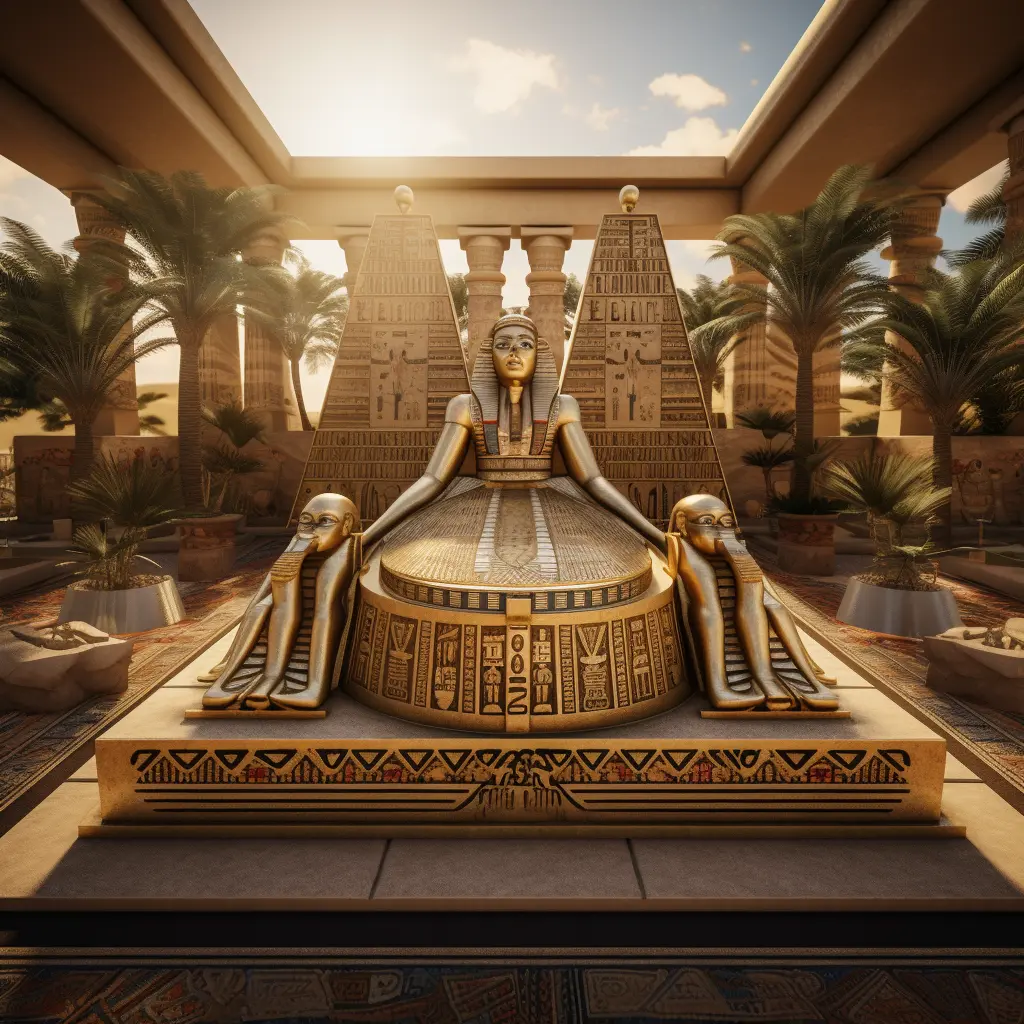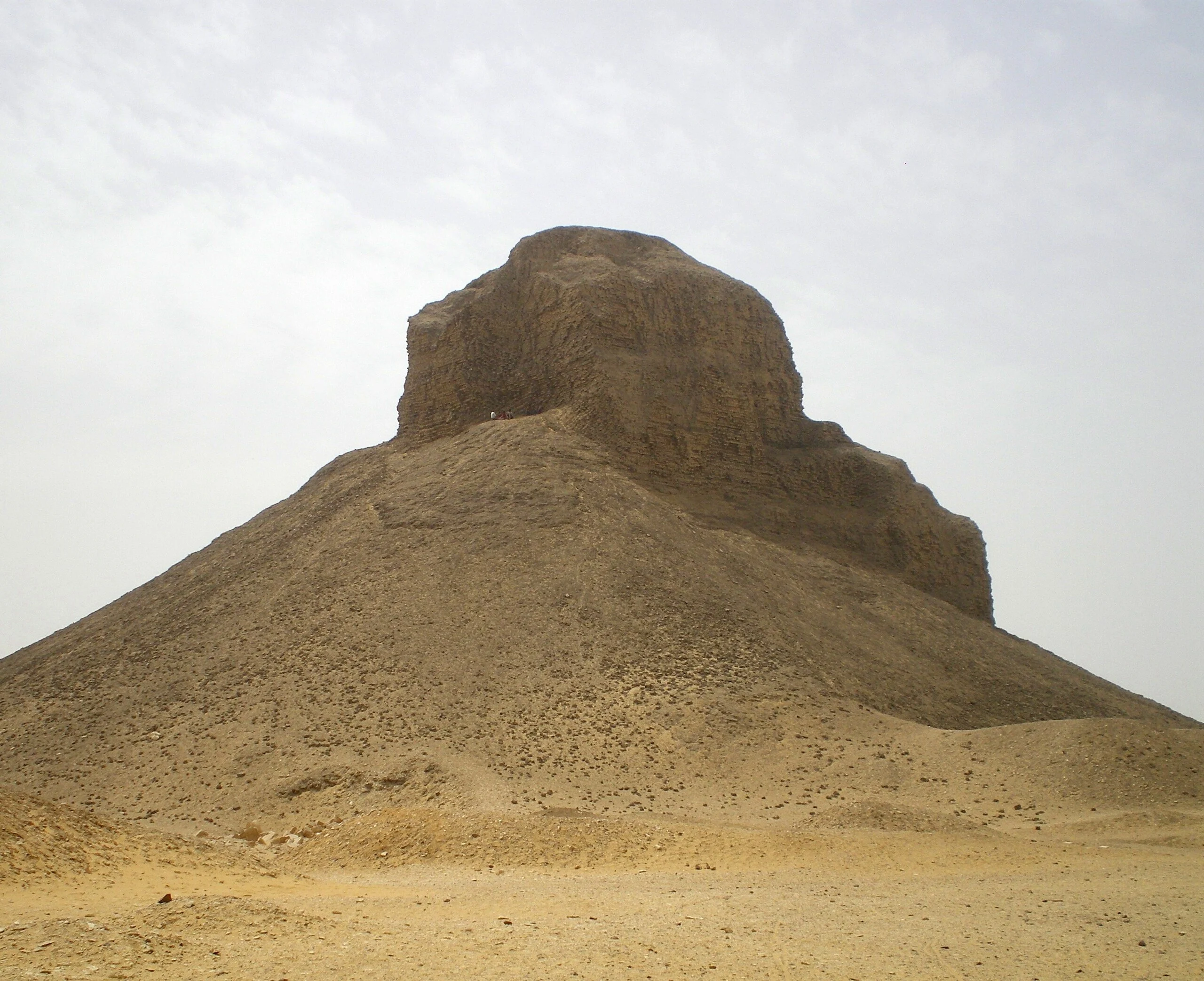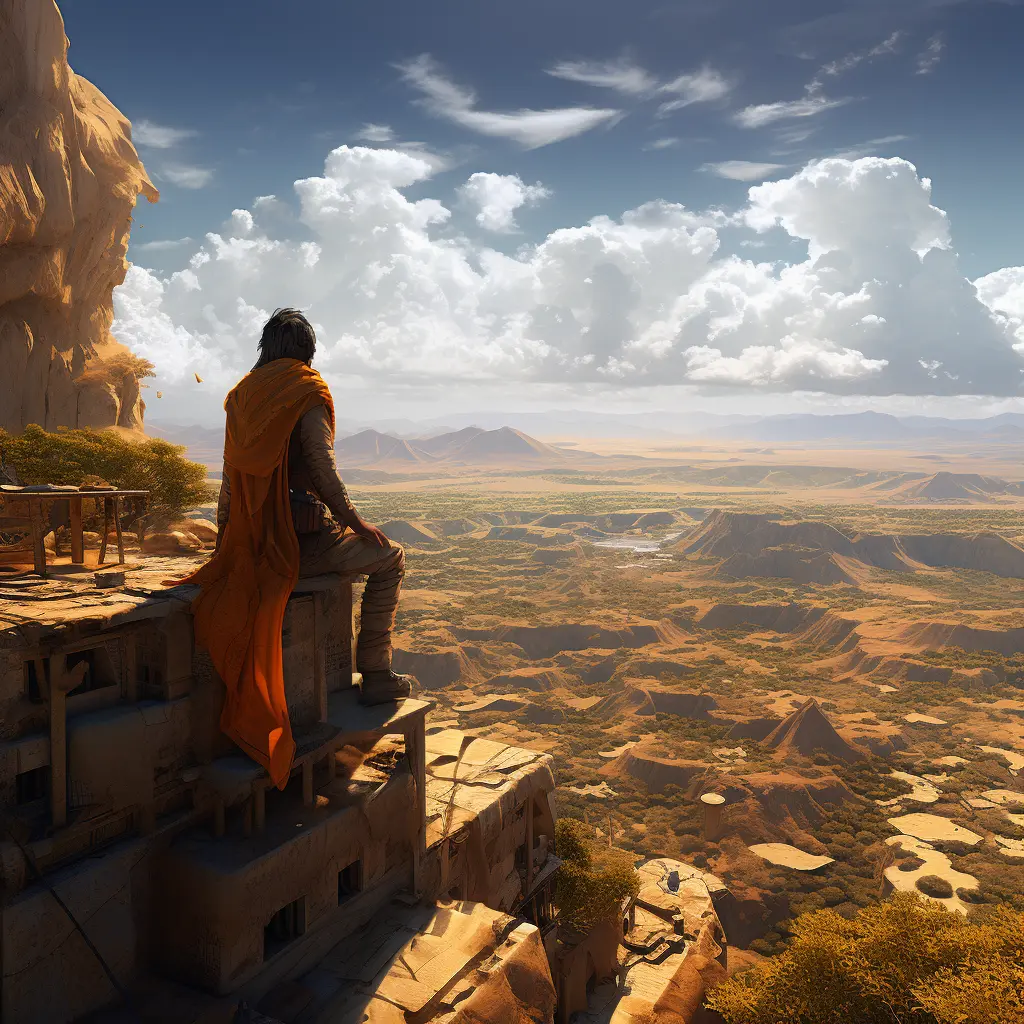
Introduction
Egypt, the land of pyramids, pharaohs, and timeless wonders, has been home to some of history’s most captivating rulers. Join us on a remarkable journey through time as we unveil the legacies of Egypt’s 10 most famous pharaohs, each a shining star in the tapestry of ancient history.
Tutankhamun – The Boy King
In the annals of history, the name Tutankhamun stands as a testament to the allure of ancient Egypt. The discovery of his nearly intact tomb by Howard Carter in 1922 was nothing short of a global sensation. Tutankhamun ascended the throne at a tender age, and his reign might have been short, but its significance is immeasurable. During his rule, Egypt witnessed a return to traditional religious practices after the radical changes of Akhenaten, Tutankhamun’s predecessor. Today, Tutankhamun’s funerary treasures continue to captivate the world, offering a glimpse into the opulence and artistry of the New Kingdom.
Tutankhamun’s famous golden death mask, adorned with lapis lazuli and other precious materials, is an iconic symbol of ancient Egyptian craftsmanship. His tomb, located in the Valley of the Kings, contained an array of artifacts, including furniture, jewelry, and ceremonial objects. Beyond the material wealth, his legacy lies in his role as a cultural bridge between the tumultuous reigns of Akhenaten and the subsequent rulers who sought to restore Egypt’s traditional beliefs.
Ramesses II – The Great Builder
When we think of the great pharaohs of ancient Egypt, Ramesses II invariably comes to mind. Often referred to as Ramesses the Great, he reigned for an astonishing 66 years during the 19th Dynasty. His enduring legacy is deeply intertwined with his monumental building projects and military conquests. Ramesses II’s prolific construction efforts left an indelible mark on Egypt’s landscape. The twin temples of Abu Simbel, hewn into the cliffs of Nubia, are a testament to his grandeur and devotion to the gods Amun and Ra-Horakhty. The colossal statues of Ramesses II that guard the entrance to these temples are some of the most iconic sculptures of ancient Egypt.
Beyond his architectural feats, Ramesses II is celebrated for his military prowess. His reign witnessed numerous campaigns, including the famous Battle of Kadesh against the Hittites. While the outcome of the battle remains debated, Ramesses II’s inscription at the Temple of Luxor proudly recounts his version of events. His image as a mighty warrior-king was further solidified through his diplomatic efforts and strategic marriages. Through it all, Ramesses II’s reign symbolizes the zenith of Egypt’s power and influence during the New Kingdom.
Hatshepsut – Egypt’s Female Pharaoh
In the annals of history, Hatshepsut shines as a remarkable exception to the male-dominated world of ancient Egypt. She defied convention to become Egypt’s first female pharaoh during the 18th Dynasty. Hatshepsut’s reign is celebrated for her successful rule, architectural accomplishments, and the restoration of trade networks. The magnificent temple complex at Deir el-Bahri stands as a testament to her vision and ambition.
Hatshepsut’s approach to governance and her iconic portrayal as a male pharaoh with a beard have intrigued historians for centuries. Her reign brought stability and prosperity to Egypt, making her one of the most influential female rulers of antiquity. The inscriptions on her monuments reveal her achievements and the reverence with which she was held, leaving an enduring legacy that challenges gender norms of her time.
Akhenaten – The Revolutionary
Akhenaten, a name synonymous with religious upheaval, embarked on a revolutionary path during his reign in the 18th Dynasty. His devotion to the sun god Aten led to a dramatic shift in Egypt’s religious landscape, as he promoted monotheism and rejected the pantheon of traditional gods. Akhenaten’s Amarna Period witnessed the creation of a new capital, Akhetaten (modern Amarna), and the emergence of a unique artistic style.
While Akhenaten’s radical religious reforms are his most enduring legacy, they came at a cost. His actions disrupted centuries-old traditions, leading to subsequent rulers’ efforts to restore Egypt’s religious equilibrium. The Amarna art style, characterized by its naturalistic depictions, offers glimpses into the daily life and spirituality of ancient Egypt during his reign. Akhenaten’s reign remains a captivating chapter in Egypt’s history, provoking discussions about religious tolerance and innovation.
Cleopatra VII – The Last Pharaoh
Cleopatra VII, the illustrious queen of Egypt, left an indelible mark not only on Egyptian history but on the world’s stage. Her name evokes images of opulence, power, and legendary love affairs. Cleopatra’s rule marked the end of the Ptolemaic dynasty and her tumultuous entanglements with Roman leaders Julius Caesar and Mark Antony are legendary. Her ability to navigate the complex political landscape of the Roman Republic and her alliance with these powerful figures define her reign.
Cleopatra’s enduring legacy extends beyond her romantic liaisons. Her intellect, multilingualism, and cultural patronage contributed to Egypt’s prosperity. Her death marked the end of Egypt as an independent kingdom, yet her name lives on as a symbol of beauty, intrigue, and the last gasp of ancient Egyptian sovereignty.
Thutmose III – Egypt’s Napoleon
Known as the “Napoleon of Egypt,” Thutmose III’s reign during the 18th Dynasty is marked by military conquests and expansive territorial acquisitions. He inherited the throne as a co-regent but ultimately consolidated his power and embarked on a series of military campaigns. His victories expanded Egypt’s empire, stretching from Nubia to the Euphrates River.
Thutmose III’s prowess as a military strategist is evident in his meticulous records of battles and sieges. The Karnak Temple complex, including the Temple of Amun, bears inscriptions documenting his achievements. Under his rule, Egypt reached new heights of influence and prosperity, solidifying his legacy as one of Egypt’s greatest pharaohs and a masterful military tactician.
Khufu – The Pyramid Builder
Khufu, also known as Cheops, reigned during the Old Kingdom’s 4th Dynasty and is synonymous with the construction of the Great Pyramid of Giza, one of the most iconic structures in human history. The Great Pyramid stands as a testament to ancient Egypt’s architectural prowess and the monumental undertakings of Khufu’s reign.
The construction of the Great Pyramid, along with the adjacent pyramids of Khafre and Menkaure, showcases Khufu’s ambition and engineering acumen. These massive tombs, constructed with precision and ingenuity, have withstood the test of time, continuing to inspire awe and wonder. Khufu’s reign, with its monumental achievements, remains a defining era in the history of pyramid construction and architectural marvels.
Amenhotep III – The Magnificent
Amenhotep III, often hailed as Amenhotep the Magnificent, presided over a period of opulence and artistic flourishing during the 18th Dynasty. His reign is characterized by abundant building projects and a flourishing of the arts. The colossal statues of Amenhotep III, known as the Colossi of Memnon, continue to stand as silent sentinels in the Theban Necropolis.
Under Amenhotep III’s rule, Egypt experienced remarkable prosperity, and his diplomatic prowess resulted in fruitful relations with neighboring powers. His reign’s art and architecture reflect a sense of splendor and luxury, with the Temple of Luxor and the Karnak Temple complex as prime examples. Amenhotep III’s legacy lies not only in his grand construction endeavors but also in his ability to maintain Egypt’s dominance during a time of relative peace.
Ramses III – The Defender
Ramses III, of the 20th Dynasty, is celebrated as a pharaoh who successfully defended Egypt against external threats. His reign witnessed the famous Battle of the Delta against the Sea Peoples, a conflict that had a profound impact on Egypt’s security and stability. Ramses III’s ability to repel these invaders solidified his image as a guardian of Egypt.
In addition to his military achievements, Ramses III was a prolific builder, with construction projects that left an indelible mark on the landscape. His mortuary temple at Medinet Habu and the grandeur of the Karnak Temple complex speak to his dedication to the gods and the legacy he sought to leave behind. Ramses III’s rule stands as a testament to the enduring strength of Egypt and its capacity to withstand external threats.
Seti I – The Warrior King
Seti I, a pharaoh of the 19th Dynasty, earned a reputation as a formidable warrior-king and a patron of grand architectural projects. His military campaigns, including campaigns against the Hittites, brought both territorial gains and recognition of Egypt’s might.
Seti I’s dedication to the gods is evident in his construction projects, most notably the Great Hypostyle Hall at the Karnak Temple complex and the mortuary temple at Abydos. His reign marked a continuation of the New Kingdom’s architectural and military achievements, as well as the preservation of Egypt’s cultural heritage.
Conclusion
As we conclude our journey through the lives and legacies of these remarkable pharaohs, we are reminded of the enduring impact they left on Egypt and the world. Each pharaoh’s reign is a chapter in Egypt’s rich history, contributing to its cultural tapestry and eternal fascination.
FAQ: Exploring Egypt’s Legendary Pharaohs
Who was Tutankhamun, and why is he famous?
Tutankhamun, often referred to as the “Boy King,” is famous for the discovery of his nearly intact tomb in the Valley of the Kings. His reign was brief, but his tomb’s treasures provide insights into the opulence of the New Kingdom.
What were the major accomplishments of Ramesses II?
Ramesses II, also known as Ramesses the Great, is celebrated for his prolific building projects, including the temples at Abu Simbel, and his military campaigns, such as the Battle of Kadesh.
How did Hatshepsut become Egypt’s first female pharaoh?
Hatshepsut became Egypt’s first female pharaoh by initially serving as regent for her young stepson, Thutmose III. Over time, she transitioned from regent to pharaoh, adopting male titles and iconography to solidify her position as the ruler of Egypt.
What were Akhenaten’s religious reforms, and how did they impact Egypt?
Akhenaten’s religious reforms centered on the worship of a single god, the sun disc Aten, effectively introducing a form of monotheism. This shift disrupted Egypt’s traditional polytheistic beliefs, leading to the closure of temples dedicated to other gods and a change in artistic representations. These reforms were largely reversed after Akhenaten’s death, restoring the previous religious order.
What role did Cleopatra VII play in Egypt’s history?
Cleopatra VII was the last pharaoh of Egypt, known for her diplomatic and romantic alliances with Roman leaders Julius Caesar and Mark Antony. Her reign marked the end of the Ptolemaic dynasty and, following her death, Egypt became a province of the Roman Empire.
How did Thutmose III earn the title “Napoleon of Egypt”?
Thutmose III expanded Egypt’s empire through military conquests, earning him the nickname “Napoleon of Egypt.” His reign witnessed territorial growth and military successes.
What is the significance of Khufu, also known as Cheops, in Egyptian history?
Khufu is renowned for commissioning the construction of the Great Pyramid of Giza, one of the Seven Wonders of the Ancient World.
How did Amenhotep III contribute to Egypt’s cultural heritage?
Amenhotep III’s reign is celebrated for its artistic achievements and opulent building projects, including the Colossi of Memnon.
What challenges did Ramses III face, and how did he defend Egypt?
Ramses III successfully defended Egypt against the Sea Peoples during his reign. His military prowess and legacy as a guardian of Egypt are well-documented.
What were the key achievements of Seti I, and how did he contribute to Egypt’s cultural legacy?
Seti I was known for his military campaigns and ambitious temple construction, including the Great Hypostyle Hall at the Karnak Temple complex. His reign marked a period of architectural and cultural richness.



